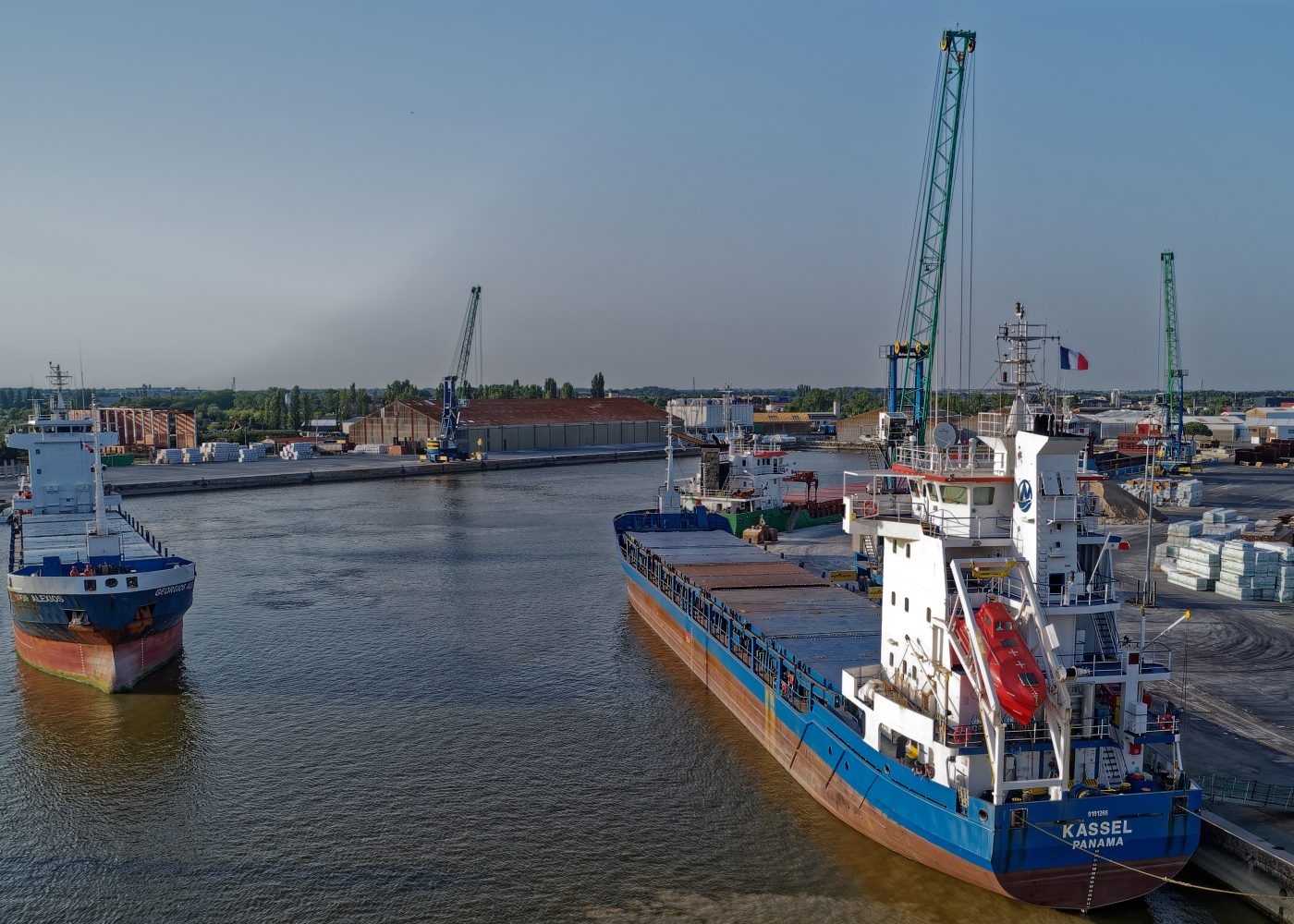Ports of Rochefort and Tonnay-Charente

Port of Rochefort
From a naval arsenal to a commercial port handling over 400,000 tons of diverse goods, the Port of Rochefort has experienced significant development due to its strategic location, the industrialization of the city, and the adaptation of port infrastructure.
Access to the floating dock is via a lock that is 167 m long and 18 m wide. The Port of Rochefort can accommodate vessels with a maximum length of 120 m, a maximum width of 16.50 m, and a draft of 6.50 m. It features a floating dock served by a lock.
The port has 7 berths with 5 mobile cranes, each with a maximum lifting capacity of 40 tons.
Storage areas at the Port of Rochefort:
- Open storage areas: 30,000 m²
- Covered storage warehouses: 33,000 m²
Sectors
The Port of Rochefort handles a variety of goods, including fertilizers, clay, wood, scrap metal, cement, tire waste, and peat, with a total annual traffic of 450,000 tons.
It is also a key link in the logistics chain for local industries. Nautitech uses the port’s equipment to launch and equip all of its catamarans. Beluga sections, manufactured by AIRBUS at its Rochefort site, are transported via the commercial port to Langon.
Port of Tonnay-Charente
Tonnay-Charente is a medieval city that emerged from the needs of river and maritime trade. The port experienced flourishing growth until the 18th century, and despite the development of Rochefort, it has maintained its appeal through adaptability.
The current port is located on the right bank of the Charente River. The total length of the quays stretches for 1,450 meters. The berths at the Port of Tonnay-Charente can accommodate vessels up to 120 meters in length with a draft of 6.50 meters.
This river port is equipped with two berths, one sand unloading pipe, and one grain
loading gantry with a capacity of 600 tons per hour, along with 14,026 m² of available
open storage areas.
